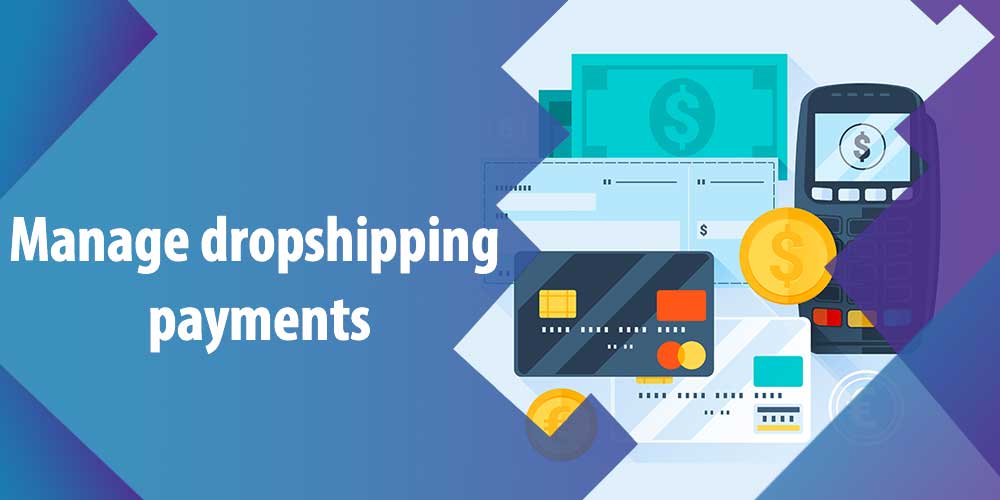Dropshipping is a popular ecommerce business option, but managing the payments for your dropshipping business can be tricky.
For example, it’s always important to use a payment gateway that you can trust to keep your, and your customers’, personal details private and to run transactions securely. It’s also best to choose one that’s familiar to your target market so that your customers will feel safe and be more willing to trust your business with their payment details.
But arranging payments for dropshipping brings its own unique challenges as some payment providers are not built for the specific needs of dropshippers.
The Challenges of Managing a Dropshipping Businesses
For starters, dropshipping businesses are known for generating a higher than average amount of chargebacks. As a result, dropshipping could be could be classified at the more “high-risk” end of the ecommerce industry.
Secondly, when you’re dropshipping, you don’t have any control over inventory, packaging, or fulfilment. You can’t order more stock when you see levels running low, and unless your supplier keeps you well informed, you won’t know about delays or last-minute cancelations to shipments.
You also can’t make sure that the packaging is of a standard you’d want for your customers or includes hand-written notes to increase customer satisfaction. All of this makes it more likely that something could go wrong to disappoint your customer and trigger a chargeback request.
As a result, some payment providers refuse outright to work with dropshipping businesses. Others won’t necessarily reject your dropshipping business but they will ask more questions about it. You might be able to open an account, depending on your business location, the type of products you want to sell, and your previous business history, but it’s not as straightforward as setting up payment processing for any other ecommerce business.
Choosing the Right Payments Partner is Crucial
Finding the right payment processing partner is important for every business owner, but it’s crucial for dropshippers. Profit margins in the dropshipping vertical are notoriously low, because without unique products and little control over customer experience, price is one of the few ways that dropshipping businesses compete.
On top of that, you can’t benefit from bulk discounts, because every dropshipping transaction is individual, so dropshippers really need to keep their expenses down, and that means cutting transaction fees as much as possible. As you want to keep your supplier happy so they’ll give you the best possible prices, you also won’t be able to pass on those wretched banking fees.
While every ecommerce business can be cross-border, it’s particularly likely for dropshipping because you have little contact with either suppliers or customers. Many dropshippers use overseas suppliers, frequently in China, and/or ship to customers in other locations where there’s a high demand for items that are low-cost in your area.
As a result, dropshippers need robust currency support that can handle transactions in multiple currencies. Once again, you want to keep currency conversion fees as low as possible, but you also need banking that can process transactions in foreign currencies quickly, so you don’t end up facing cash flow issues.
The Benefits of Using a Global Payment Service
The good news is that there are payment services out there that understand the needs and operational model of dropshipping and can help ensure everything works more smoothly for your business.
By using international receiving accounts to receive payments directly in USD, EUR, GBP, JPY, AUD, CAD, or any other major currency, you can connect with local payment processors that your cross-border customers already know and trust, because many trusted local payment providers won’t process foreign currency payments. This helps you to scale your business in the new region.
Having received your funds in a currency that suits your customers, you can then use them to pay suppliers, logistics partners, or tax requirements. For example, if you’re running a dropshipping company from the Philippines and serving customers in Europe, you’ll need to pay local VAT. Converting money from your home business bank account into EUR can take days if you use a bank transfer or money remittance, plus you’ll have to pay high fees and accept poor bank exchange rates.
Using a payment service that lets you hold revenue from EU customers in EUR and then pay your VAT when its due, without any fees, hassle, or losing money to exchange rates, can be a major stress remover for your business and make your whole payments operation much smoother. You could do the same for your overseas suppliers, too. By using an online payment service the transfer happens almost immediately, so they get their money faster and at a better rate to you too.
Of course, one overriding concern for every cross-border business, dropshipping or not, is the security of your payments. You have a lot of money that’s moving between your overseas customers, your local logistics partners, and potentially multiple different suppliers, and you can’t afford for payments to go astray or for anyone to steal your financial details. For this reason, it’s important to use a payment service that is highly secure, regulated and licensed, and compliant with international banking standards.
Payoneer Helps Dropshipping Businesses to Scale and Thrive
Finding a helpful and trustworthy payment solution can make all the difference to the success of your dropshipping business, which is why Payoneer’s payment service was built with dropshippers in mind. With Payoneer’s fast, hassle-free, and low-cost service, you can feel secure enough to keep expanding into new geographies and markets without worrying about your banking.
Learn more about how to easily manage your cross-border payments

